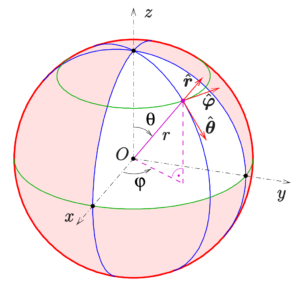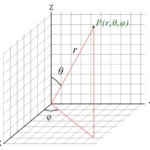The concept of the instantaneous rate of change is the foundation of calculus and is important in many areas of physics, such as kinematics and electromagnetism.
The average rate of change shows how a function changes over time. The instantaneous rate of change, on the other hand, shows how a function changes at a single point.
Instantaneous rate of change
The instantaneous rate of change of a function \( f(x) \) at a point \( x = a \) is defined as the limit of the average rate of change as the interval approaches zero. Mathematically, it is represented as:
\[
f'(a) = \lim_{{h \to 0}} \frac{f(a + h) – f(a)}{h}
\]
Here, \( f'(a) \) is also known as the derivative of \( f(x) \) at \( x = a \).
Instantaneous rate of change formula
A derivative is frequently used to calculate the instantaneous rate of change. The derivative \( f'(x) \) of a function \( f(x) \) at a point \( x \) is given by:
\[
f'(x) = \lim_{{\Delta x \to 0}} \frac{f(x + \Delta x) – f(x)}{\Delta x}
\]
Example
Consider the function \( f(x) = x^2 \). The derivative \( f'(x) \) is:
\[
f'(x) = \lim_{{h \to 0}} \frac{(x+h)^2 – x^2}{h} = 2x
\]
So, the instantaneous rate of change at \( x = 2 \) would be \( f'(2) = 4 \).
Solved Examples on Instantaneous Rate of Change
Example 1: Finding the Instantaneous Rate of Change for \( f(x) = x^2 \)
Problem Statement
Find the instantaneous rate of change of the function \( f(x) = x^2 \) at \( x = 3 \).
Solution
To find the instantaneous rate of change, we need to calculate the derivative \( f'(x) \) of \( f(x) \).
Step 1: Calculate \( f'(x) \)
\[
f'(x) = \lim_{{h \to 0}} \frac{(x+h)^2 – x^2}{h} = \lim_{{h \to 0}} \frac{x^2 + 2xh + h^2 – x^2}{h} = 2x
\]
Step 2: Evaluate \( f'(3) \)
\[
f'(3) = 2 \times 3 = 6
\]
The instantaneous rate of change of \( f(x) = x^2 \) at \( x = 3 \) is 6.
Example 2: Instantaneous Velocity of a Particle
Problem Statement
A particle moves along a straight line according to the equation \( s(t) = 4t^2 + 3t + 1 \), where \( s(t) \) is the position of the particle at time \( t \). Find the instantaneous velocity of the particle at \( t = 2 \) seconds.
Solution
The instantaneous velocity \( v(t) \) is the derivative of the position function \( s(t) \).
Step 1: Calculate \( v(t) \)
\[
v(t) = \frac{ds}{dt} = \lim_{{\Delta t \to 0}} \frac{4(t + \Delta t)^2 + 3(t + \Delta t) + 1 – (4t^2 + 3t + 1)}{\Delta t}
\]
\[
= \lim_{{\Delta t \to 0}} \frac{4t^2 + 8t\Delta t + 4\Delta t^2 + 3t + 3\Delta t + 1 – 4t^2 – 3t – 1}{\Delta t}
\]
\[
= \lim_{{\Delta t \to 0}} \frac{8t\Delta t + 4\Delta t^2 + 3\Delta t}{\Delta t} = 8t + 3
\]
Step 2: Evaluate \( v(2) \)
\[
v(2) = 8 \times 2 + 3 = 19 \text{ m/s}
\]
The instantaneous velocity of the particle at \( t = 2 \) seconds is \( 19 \text{ m/s} \).
These examples should make it clear how to figure out the instantaneous rate of change in different situations, whether they involve maths or physics problems.
Applications in Physics
The concept of instantaneous rate of change is critical in physics for understanding phenomena such as:
- Velocity: The instantaneous velocity of an object is the rate of change of its position with respect to time at a specific instant. \[
v = \frac{dx}{dt}
\] - Acceleration: The instantaneous acceleration is the rate of change of velocity with respect to time at a specific instant.\[
a = \frac{dv}{dt}
\]
Questions and Answers
Is the instantaneous rate of change always defined?
Answer: No, the instantaneous rate of change is not always defined, especially at points where the function is not differentiable.
How is the instantaneous rate of change different the average rate of change?
Answer: The instantaneous rate of change focuses on a specific point, while the average rate of change considers an interval.
What is the physical significance of the instantaneous rate of change?
Answer: In physics, the instantaneous rate of change often represents quantities like velocity, acceleration, and electric field strength at a specific point in time or space.
Can the instantaneous rate of change be zero?
Answer: Yes, at points where the function reaches a local maximum or minimum, the instantaneous rate of change is zero.



